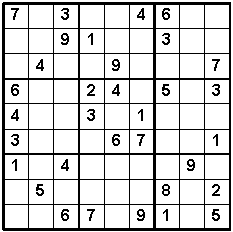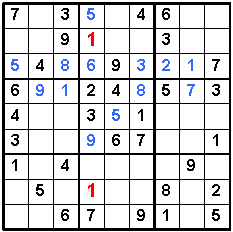Sudoku's modern version appeared for the first time in 1979 under the name "Number place", in an issue published by Dell magazines. In 1984, it was launched in Japan by Nikoli, a magazine dedicated to games, with immediate succes, though limited to the borders of that country.
In 1997, Wayne Gould, a retired judge from Hong Kong (Born in New Zealand) came upon Sudoku grids in a Japanese bookshop and took a passion for the puzzle. He then spent 6 years in developping a sudoku grid generator. After he hadnfinalized his software, he got in touch with the British daily 'The Times', which published the grids straight away. The sudoku phenomenon underwent a boost as most of the British press followed suit.
In France, sudoku grids first came up in the daily 'Le Figaro', then in 'Libération' and 'Le Monde'. By summer 2005, Sudoku was all the rage in France. The game had conquered large parts of the country's bookshop shelves.
(Thanks to the http://sudoku.fluctuat.net/sudoku_h.html for the information).
Now let's move on to :





The difficulty of a puzzle is based on the number and positionning of the given cells.
The number of classic 9×9 Sudoku solution grids was shown in 2005 by Bertram Felgenhauer and Frazer Jarvis to be 6,670,903,752,021,072,936,960. This number, as huge as it may look, is not much compared to the number of grids that can be formed. As a matter of fact, several grids can be generated from a single solution according to the quantity of the given numbers. That is more than you bargained for, ain't it ?
More information on : http://fr.wikipedia.org/wiki/Sudoku.